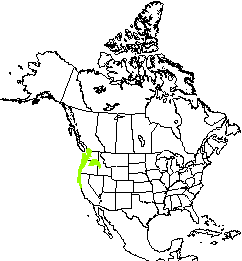|
Coast mole Scapanus orarius 
|
 |
 |
| Identification: Mass: 46-78 g Body length: 145-181 mm Tail length: 34 mm Colour: blackish brown Young: 3-4 per litter Habitat: moist, well-drained soils in riparian areas, meadows and deciduous forests Diet: primarily earthworms; also eats snails, slugs, millipeds, centipedes and soil insects |
|
Natural History: Occasionally referred to as the "pacific" mole, coast moles are highly fossorial in habit. Coast moles are primarily known for the numerous molehills that dot their homeranges. In fact, a single individual may constuct 200-400 of these mounds (typically 30 cm in diameter and 15 cm in height) over the course of a winter. Connecting these mounds are a vast array of tunnels that are generally <1 meter in depth, but may reach depths of 2 meters. These tunnels are routinely patrolled for earthworms, insects and slugs, although a small amount of vegetation may also be consumed. |
|

|
Distribution: The coast mole occurs from the Fraser Delta region of southwestern British Columbia, south through the western portions of Washington and Oregon to coastal regions of northwestern California. It is also known to occur in parts of eastern Washington and Oregon and in one area of extreme west-central Idaho. |
| Selected Readings: |
Glendenning, R. 1959. Scapanus orarius orarius True, in British Columbia. Canadian Journal of Animal Science 39:34-44. Hartman, G.D and T.L. Yates. 1985. Scapanus orarius. Mammalian Species 253:1-5. Sheehan, S.T. and C. Galindo-Leal. 1997. Identifying coast moles, Scapanus orarius, and Townsend's moles, Scapanus townsendii, from tunnel and mound size. Canadian Field Naturalist 111:463-465. |

|

